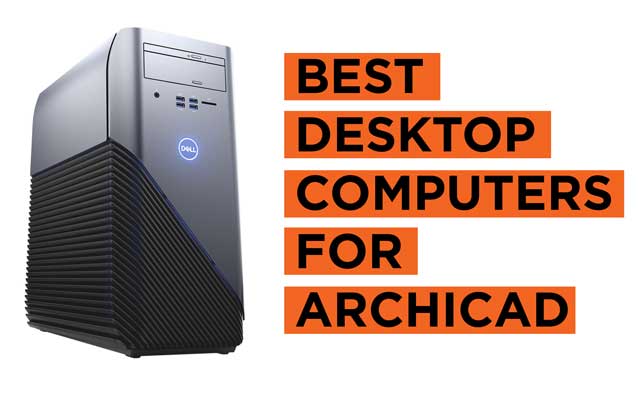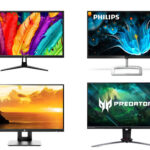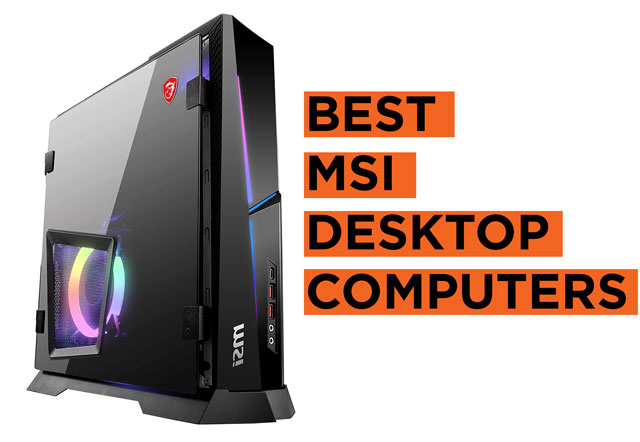Archicad is your digital workspace. It holds your drawings, your models, your revisions, your deadlines. As architects and design professionals, we know that a laggy 3D viewport, slow section generation, or choppy teamwork performance can throw off your entire project rhythm. This guide is designed specifically for you.
If you’re designing residential buildings, detailing commercial plans, collaborating on BIMx workflows, or coordinating IFC models, you need a desktop that doesn’t slow you down. We’re here to help you choose that machine, not just any PC, but one engineered to keep up with the demands of Archicad’s hybrid 2D/3D engine.
Let’s talk challenges.
Archicad is CPU-focused during modeling, memory-intensive with large projects, and surprisingly dependent on single-thread performance when regenerating views or drawings. Throw in multiple layouts, libraries, and teamwork syncingand your average consumer-grade PC falls apart. Many systems fail not because of the CPU alone, but because of a lack of balance across components.
So what’s the solution?
We’ve compared desktop computers that hold up under real-world Archicad usage: large models, complex meshes, teamwork files with dozens of hotlinked modules. Our process emphasizes performance stability, upgradability, and responsiveness inside the Archicad environment.
Every system we recommend comes with, at minimum:
- A 12th-gen Intel i7 or Ryzen 7 5700X CPU or newer, with strong single-core performance
- 32GB of DDR4/DDR5 RAM, to handle large PLN files, Teamwork cache, and multitasking
- A 1TB NVMe SSD—for fast file access, library loading, and OS responsiveness
- An NVIDIA RTX 3060 or higher, with reliable driver support and enough CUDA cores to accelerate rendering via Cineware or Redshift plugins
- A dedicated cooling solution, preferably a tower air cooler or a 240mm liquid AIO
- A motherboard with good VRMs and support for future upgrades
We assess each PC across these five critical dimensions:
CPU Efficiency in BIM Workflows – Archicad leverages high-frequency cores for modeling tasks. We prioritize CPUs with high IPC (instructions per cycle), strong turbo clocks, and efficient core management.
RAM Capacity & Stability – Especially vital for large .PLN files, point cloud support, and multitasking with external software like Twinmotion, Bluebeam, or Photoshop. ECC isn’t required, but stability is.
Disk Speed & IO – Projects grow fast. From imported PDFs to linked libraries and render textures, we test with PCIe Gen 4 NVMe SSDs for ultra-low load times and fast autosaves.
Graphics Handling in 3D Window – While Archicad isn’t a GPU-heavy application in most operations, the 3D window, shadows, and textures benefit from a solid GPU. Compatibility with OpenGL 4.5 is critical.
System Reliability Under Load – Stability beats flash. We look at case airflow, noise levels, dust filtration, and PSU headroom. These things matter when rendering or compiling PDFs all day long.
Use cases? We’ve got them covered:
- Mid-size architecture firms needing robust multi-project workstations
- Solo professionals working remotely or in hybrid setups
- BIM managers setting up centralized workstations for Teamwork syncing
- Academic users handling studio projects and rendering portfolios
- Small studios using Archicad in tandem with Twinmotion, Lumion, or Enscape
This isn’t a list of gaming PCs repurposed for work. It’s a guide tuned specifically to what Archicad users actually experience: lags in the 3D window, redraw times, crashing on heavy model imports, delays in publishing drawings. We recommend systems built to avoid those issues.
Also look at the Best Desktop Computers for Architecture in addition to the Best Desktop PC for Revit.
These are the Best Desktop Computers for Archicad;
Contents
- Corsair Vengeance i7500 Series Gaming PC - Liquid Cooled Intel Core i9 14900KF CPU - NVIDIA GeForce RTX 4090
- HP OMEN 45L Gaming Desktop, AMD Ryzen 9 5900X, 32 GB RAM, 1 TB Solid State Drive, NVIDIA GeForce RTX 3080 Ti Graphics
- Alienware Aurora R15 Gaming Desktop - Intel Core i7-13700F, 16GB DDR5 RAM, 512GB SSD+1TB HDD, NVIDIA RTX 4070 Ti
- HP 2023 Victus 15L Gaming Desktop PC, AMD 6-Core Ryzen 5600G Processor (Up to 4.4 GHz), 16GB RAM, 512GB NVMe
- Alienware Aurora R10 Gaming Desktop - AMD Ryzen 7 5800, 16GB DDR4 RAM, 1TB SSD, AMD Radeon RX 6600XT 8GB GDDR6
- HP Victus Gaming Desktop, AMD Ryzen 7-5700G Processor, Radeon RX 6600XT 8GB Graphics(Outperforms RTX 3060), 32GB RAM, 2TB PCIe SSD
Corsair Vengeance i7500 Series Gaming PC - Liquid Cooled Intel Core i9 14900KF CPU - NVIDIA GeForce RTX 4090 |
|
|---|---|
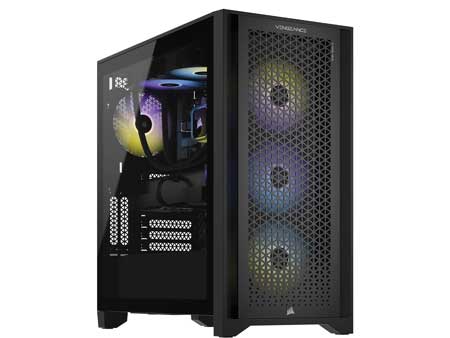 See This On Amazon |
|
| CPU | Intel Core i9 14900KF |
| Processor Speed | 3.2 GHz |
| GPU | NVIDIA GeForce RTX 4090 |
| Graphics Card Memory | 24 GB |
| RAM | 64GB |
| Storage Space | 2TB M.2 SSD |
| Operating System | Windows 11 |
| Dimensions | 17.8 x 9.1 x 18.3 inches |
| Keyboard & Mouse | Sold Separately |
| Computer Monitor | Sold Separately |
| Advantages | Performance |
| Disadvantages | n/a |
HP OMEN 45L Gaming Desktop, AMD Ryzen 9 5900X, 32 GB RAM, 1 TB Solid State Drive, NVIDIA GeForce RTX 3080 Ti Graphics |
|
|---|---|
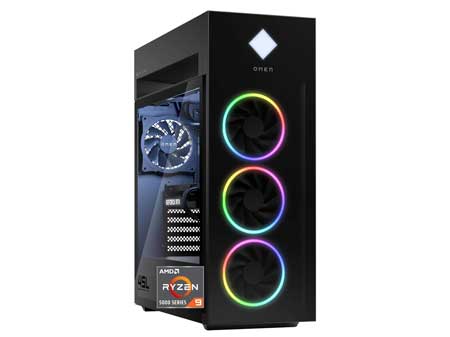 See This On Amazon |
|
| CPU | AMD Ryzen 9 5900X, |
| Processor Speed | 4.8 |
| GPU | GeForce RTX 3080 Ti |
| Graphics Card Memory | 12 GB |
| RAM | 32 GB DDR4 |
| Storage Space | 1 TB Solid State Drive |
| Operating System | Windows 10 |
| Dimensions | 8.03 x 18.5 x 21.85 inches |
| Keyboard & Mouse | Sold Separately |
| Computer Monitor | Sold Separately |
| Advantages | Very good performance, Value, Compact |
| Disadvantages | N/A |
Alienware Aurora R15 Gaming Desktop - Intel Core i7-13700F, 16GB DDR5 RAM, 512GB SSD+1TB HDD, NVIDIA RTX 4070 Ti |
|
|---|---|
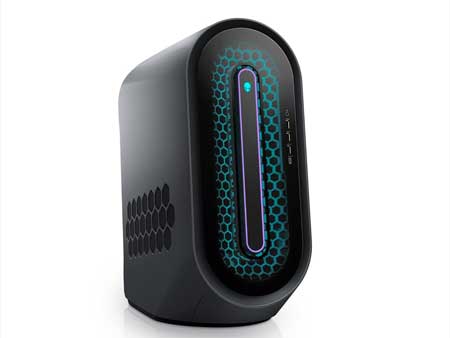 See This On Amazon |
|
| CPU | Intel Core i7-13700F |
| Processor Speed | 5.2 GHz |
| GPU | NVIDIA RTX 4070 Ti |
| Graphics Card Memory | 12GB |
| RAM | 16GB DDR5 |
| Storage Space | 512GB SSD+1TB HDD |
| Operating System | Windows 11 |
| Dimensions | 20.83 x 8.86 x 20.08 inches |
| Keyboard & Mouse | Sold Separately |
| Computer Monitor | Sold Separately |
| Advantages | Performance, Design |
| Disadvantages | Price |
HP 2023 Victus 15L Gaming Desktop PC, AMD 6-Core Ryzen 5600G Processor (Up to 4.4 GHz), 16GB RAM, 512GB NVMe |
|
|---|---|
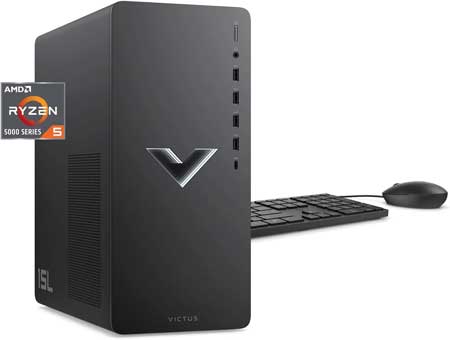 See This On Amazon |
|
| CPU | AMD 6-Core Ryzen 5600G |
| Processor Speed | up to 4.4GHz |
| GPU | AMD Radeon RX6400 |
| Graphics Card Memory | 4GB GDDR6 |
| RAM | 16GB RAM |
| Storage Space | 512GB NVMe |
| Operating System | Windows 11 |
| Dimensions | 20 x 16 x 10 inches |
| Keyboard & Mouse | Included |
| Computer Monitor | Sold Separately |
| Advantages | Price, Performance, Ports |
| Disadvantages | Storage |
Alienware Aurora R10 Gaming Desktop - AMD Ryzen 7 5800, 16GB DDR4 RAM, 1TB SSD, AMD Radeon RX 6600XT 8GB GDDR6 |
|
|---|---|
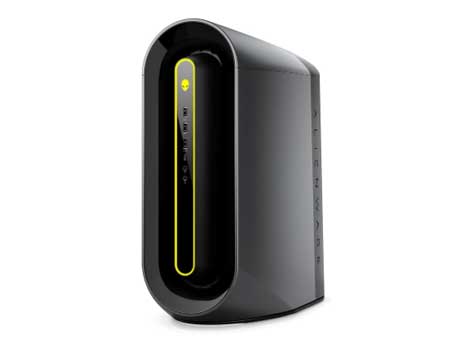 See This On Amazon |
|
| CPU | AMD Ryzen 7 5800 |
| Processor Speed | 4.6 GHz |
| GPU | AMD Radeon RX 6600XT |
| Graphics Card Memory | 8GB GDDR6 |
| RAM | 16GB DDR4 |
| Storage Space | 1TB SSD |
| Operating System | Windows 11 |
| Dimensions | 17 x 8.77 x 18.9 inches |
| Keyboard & Mouse | Sold Separately |
| Computer Monitor | Sold Separately |
| Advantages | Design, Build Quality, Performance |
| Disadvantages | Na |
HP Victus Gaming Desktop, AMD Ryzen 7-5700G Processor, Radeon RX 6600XT 8GB Graphics(Outperforms RTX 3060), 32GB RAM, 2TB PCIe SSD |
|
|---|---|
 See This On Amazon |
|
| CPU | AMD Ryzen 7-5700G |
| Processor Speed | up to 4.6 GHz max boost clock, 16 MB L3 cache, 8 cores, 16 threads |
| GPU | Radeon RX 6600XT 8GB Graphics |
| Graphics Card Memory | 8GB |
| RAM | 32GB RAM |
| Storage Space | 2TB PCIe SSD |
| Operating System | Windows 11 |
| Dimensions | 19 x 15.5 x 12 inches |
| Keyboard & Mouse | Included |
| Computer Monitor | Sold Separately |
| Advantages | Good performance, Value for money |
| Disadvantages | None |
MORE DESKTOP RECOMMENDATIONS:
Best Desktop Computers for Lumion
Latest Top Twin Motion Capable Desktop PCs

